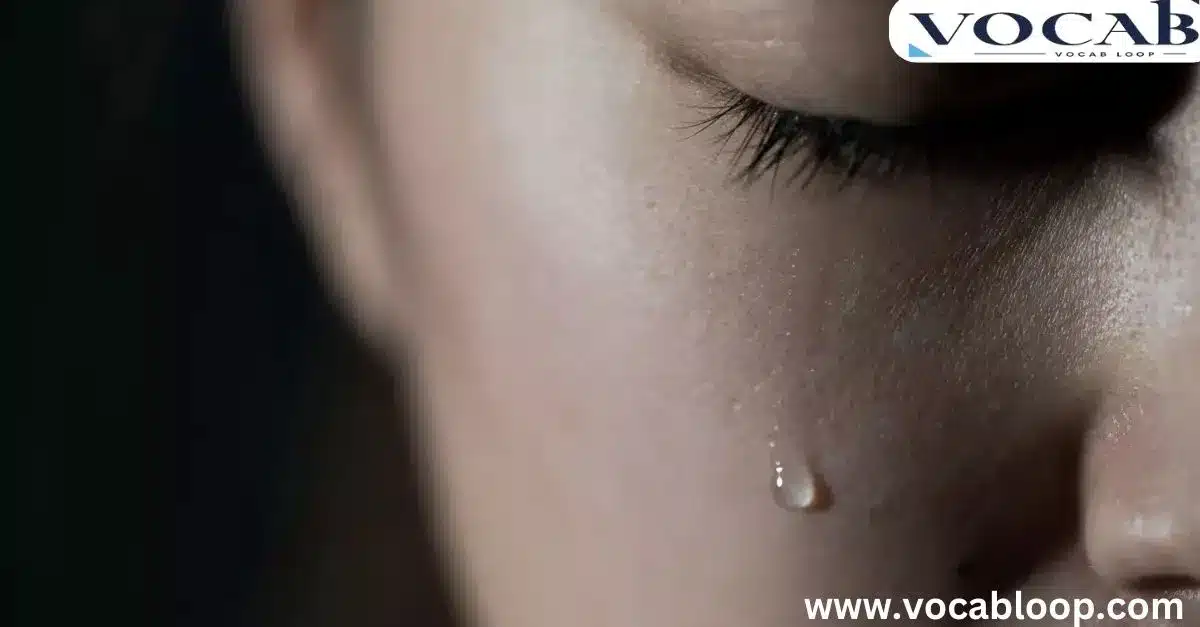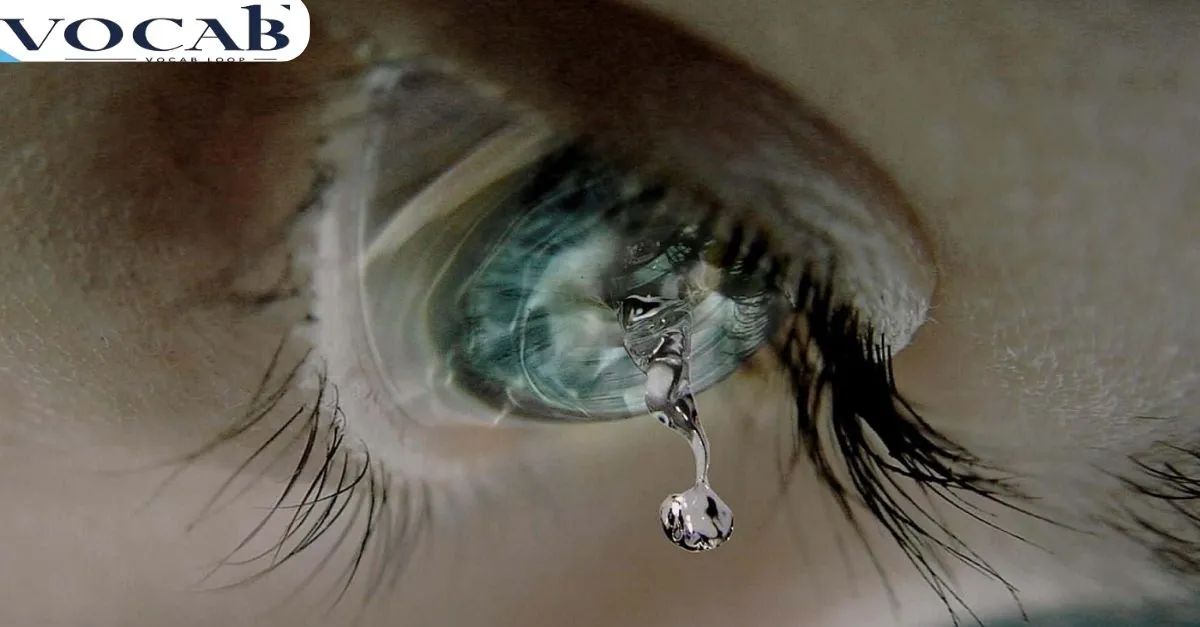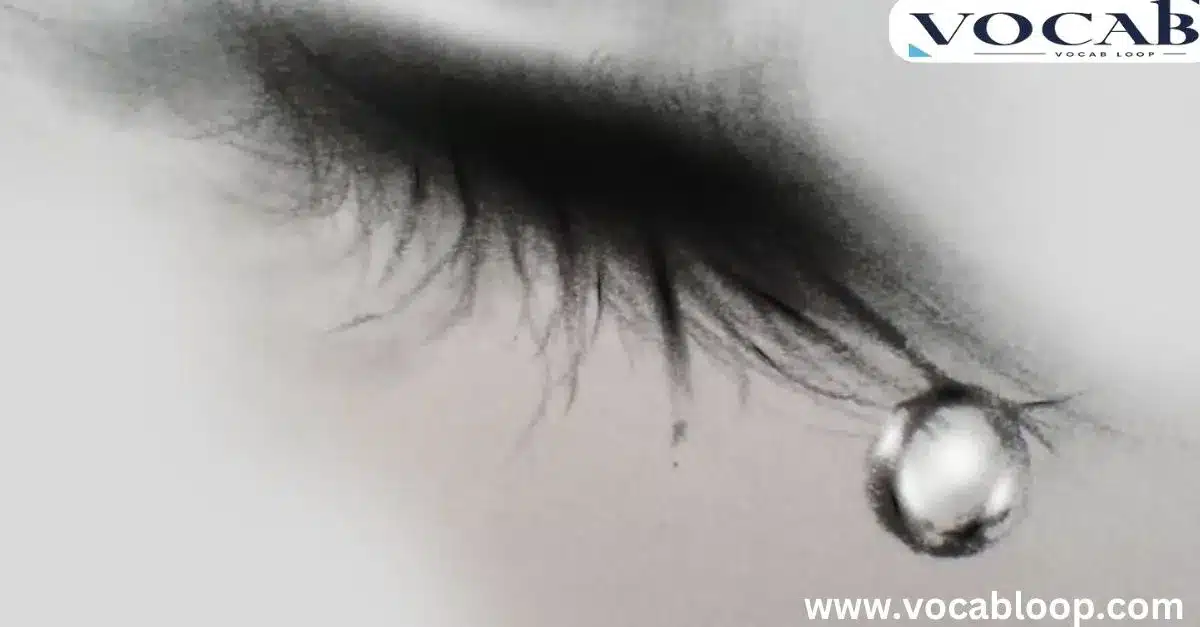The word tear can be tricky due to its two main meanings: ripping something apart or shedding tears when crying. The past tense of tear depends on its usage. For ripping, the simple past is tore (e.g., “He tore the paper”), and the past participle is torn (e.g., “The paper was torn”).
However, when referring to crying, the correct past tense is teared (e.g., “She teared up”). Knowing when to use “tore,” “torn,” and “teared” is essential for clarity. Understanding these differences helps you avoid confusion when writing or speaking. Remember, irregular verbs don’t follow the typical grammar rules.
By the end of this article, you’ll know the past simple form, past participle, and how to use “tear” in sentences for daily habits and common situations.
Why is There Confusion?
The confusion comes from the fact that the word “tear” has two main meanings. First, “tear” can mean to rip something apart. Second, “tear” refers to shedding tears when you cry. Because these meanings are different, they also have different past forms. For example, the past tense of “tear” when ripping is “tore”, while the past tense of “tear” when crying can be “teared”. This is one reason people mix them up in English grammar.
Another factor is that “tear” is an irregular verb, which means it doesn’t follow the typical rules. For instance, regular verbs form their past tense by adding “ed”, like “jump” to “jumped.” But with irregular verbs, the changes are less predictable, making language learners prone to confusion.
What Does the Word “Tear” Mean?

The word “tear” can have many meanings depending on the context. When we use it as a verb, it generally means to pull something apart by force. For example, you might say, “He tore the paper in half.” But, “tear” can also refer to crying. In this case, it means to shed tears from the eyes, as in “She teared up during the movie.”
These two meanings have different verb forms, which we will cover in more detail. Knowing the meaning of tear is crucial in using the correct past tense.
The Past Tense of “Tear”
When you use the verb “tear” in the past, it takes different forms depending on the meaning.
For ripping, the simple past tense is “tore”, and the past participle is “torn”. This means that for actions like tearing paper or cloth, you’ll say, “He tore the paper,” or “The paper has been torn.”
When it comes to crying or shedding tears, the past tense is “teared”. So, if someone was crying, you might say, “She teared up during the emotional scene.”
Past Simple: Tore vs. Teared
The past simple of “tear” for ripping is “tore”. For example, “He tore the book apart.” This follows the irregular verb pattern. However, when we talk about crying, we use “teared” as the past tense. An example would be, “She teared up when she heard the sad news.” Using these forms correctly is essential to avoid mistakes in your English writing.
Past Participle: Torn
The past participle of “tear” is “torn”. This form is often used in perfect tenses or in the passive voice. For example, you can say, “The letter was torn by the wind.” In this case, the action has already happened, and the object is the focus of the sentence. Knowing when to use the past participle is a key part of learning English grammar rules.
Pronunciation of “Tear,” “Tore,” “Torn,” and “Teared”

One of the challenging aspects of using tear is its pronunciation. The word tear (to rip) is pronounced /tɛər/, while tear (crying) is pronounced /tɪər/. This difference adds to the confusion. Likewise, tore is pronounced /tɔːr/, while torn is /tɔːrn/.
For teared, when referring to crying, the pronunciation is /tɪərd/. It is important to remember the right pronunciation when speaking to avoid miscommunication in English conversation.
Table Showing All Present, Past, and Future Tense of the Verb “Tear”
Here’s a quick look at the different verb forms of tear:
| Tense | Physical (Rip) | Emotional (Cry) |
| Present Simple | tear | tear |
| Present Continuous | tearing | tearing |
| Present Perfect | have/has torn | have/has teared |
| Past Simple | tore | teared |
| Past Continuous | was/were tearing | was/were tearing |
| Past Perfect | had torn | had teared |
| Future Simple | will tear | will tear |
| Future Perfect | will have torn | will have teared |
This table shows you how to use tear in all three tense forms for both meanings. Understanding the differences between these forms is important for language clarity.
When to Use Each Form?

Bare Infinitive
The bare infinitive form of “tear” is simply “to tear.” This is used in situations where no tense is applied yet, such as habit actions like “I like to tear paper into small pieces.”
Past Simple
The past simple form is “tore” for ripping and “teared” for crying. You use these to describe actions that happened in the past, such as “He tore his clothes,” or “She teared up during the sad movie.”
Past Participle
The past participle form is “torn” for ripping. This is used in perfect tenses and passive voice. For example, “The paper has been torn.”
Origins of the Word “Tear”
The word “tear” comes from Old English, meaning to pull apart. Over time, it developed different meanings, including crying. The past forms “tore” and “torn” have been used in English grammar since the 14th century, while “teared” as a past tense for crying is less common but still correct in modern usage.
Synonyms for “Tear,” “Tore,” “Torn,” and “Teared”

“Tear” (Present Tense)
Some related words for “tear” include rip, split, and shred.
“Tore” (Simple Past Tense)
For “tore,” similar words are ripped, shredded, and slashed.
“Torn” (Past Participle)
Synonyms for “torn” include ripped apart, broken, and severed.
“Teared” (Past Tense for Crying)
For crying, synonyms include wept, sobbed, and cried.
Examples of “Tear,” “Tore,” “Torn,” and “Teared” in Sentences
Tear (The Present Tense)
- I tear the paper carefully.
- They tear apart the wrapping on the gift.
- He always tears his shirt when he climbs trees.
- The wind tears the sails on the boat.
- Don’t tear the fabric while cutting it.
- I often tear up when I watch sad movies.
- The kids tear down the old poster.
- She tears open the letter with excitement.
- He tears through his homework quickly.
- The workers tear down the old building.
Tore (The Simple Past Tense)
- He tore the book into pieces.
- She tore the envelope and read the letter.
- They tore down the old house last year.
- I tore my jacket on the fence.
- He tore the paper accidentally.
- The wind tore the tent apart.
- She tore the fabric in the process.
- The storm tore the trees from the ground.
- He tore the picture from the wall.
- They tore the banner in half.
Torn (The Past Participle)
- The paper was torn by mistake.
- The dress had been torn before the event.
- The letter was torn into tiny pieces.
- He had torn his shirt while running.
- The poster was torn down during the protest.
- My jacket is torn and needs repair.
- The flag was torn by the strong winds.
- She had torn the paper while wrapping the gift.
- The roof was torn off during the hurricane.
- The bag was torn open by the dog.
Teared (The Past Tense of Tear for Crying)
- She teared up while watching the movie.
- He teared when he heard the sad news.
- The child teared after losing the toy.
- I teared up at the wedding ceremony.
- He teared as he spoke about his loss.
- The old man teared when he saw his grandchildren.
- She teared during the emotional speech.
- He teared while reading the letter.
- The audience teared up during the performance.
- I teared when I heard the sad story.
FAQ’s
What is the correct past tense of “tear”?
The correct past tense of “tear” (meaning to rip something) is tore. For example: “She tore the paper into small pieces.”
Is “teared” used as a past tense?
Yes, but only when referring to tears from crying. For example: “He teared up during the movie.” It is not used to describe something being ripped.
When should I use “torn”?
“Torn” is the past participle of “tear” and is used with helping verbs like “has” or “was.” For example: “The dress was torn during the event.”
Can “tore” and “torn” be used interchangeably?
No, they cannot. “Tore” is the simple past tense, while “torn” is the past participle. For example: “I tore my shirt” versus “My shirt is torn.”
What are some common mistakes with “tear”?
A common mistake is using “teared” instead of “tore” to describe something ripped. Another error is using “tore” where “torn” is required, such as saying “The paper was tore” instead of “The paper was torn.”
Conclusion
The past tense of tear is essential for proper usage in both writing and speaking. Use “tore” for the simple past when referring to ripping something apart, and “torn” for the past participle in passive voice or perfect tenses.
For crying, the correct past tense is “teared.” Mastering these forms will improve your grammar and help you communicate clearly. Whether describing physical actions or emotional expressions, using the right verb form enhances clarity and accuracy in your language.

Alex Hormozi is a seasoned blogger at Vocab Loop, known for his deep insights into language, vocabulary, and grammar. With years of experience in writing, Alex shares practical tips and effective strategies to help readers improve their linguistic skills and enhance their writing abilities.

